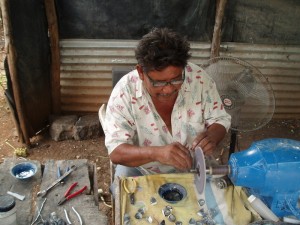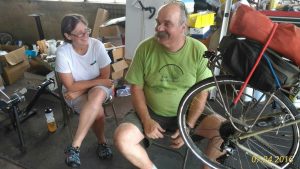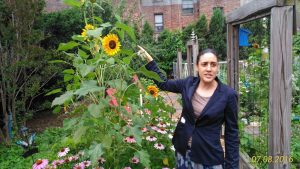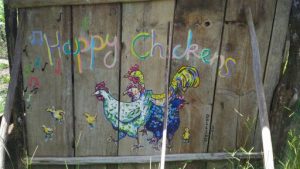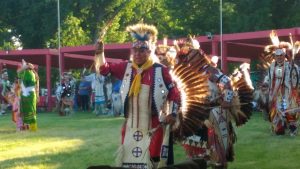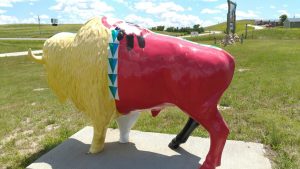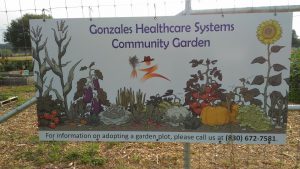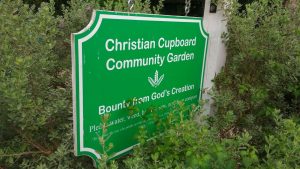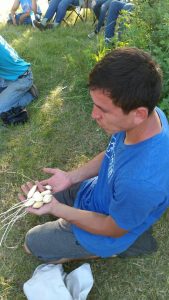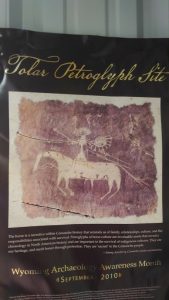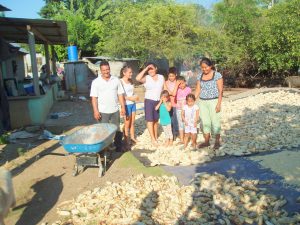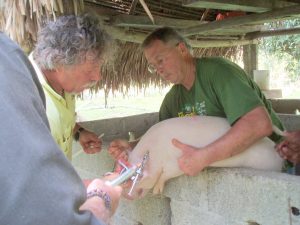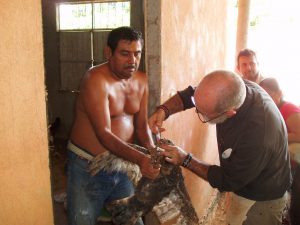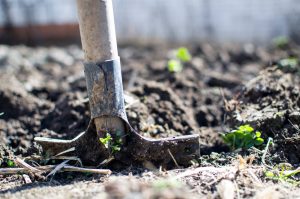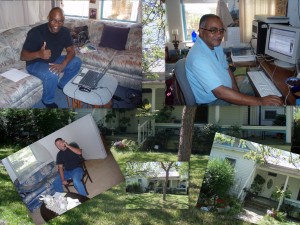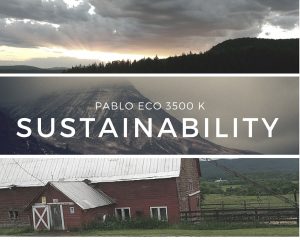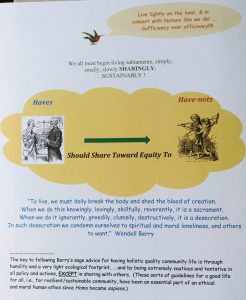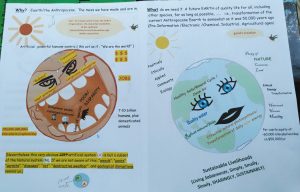THE ESSENCE. Per Merriam-Webster (MW), a job is “a regular remunerative [financially rewarding]
position”. It is an integral component of a machine-like transformation and exploitation of the natural which involves arrogance and narcissism at various levels, and is fruition of the artificial and often unjust, inhumane, and ecological insane art of deal-making. It is involved with making money (which in a laissez-faire neo-liberal capitalistic world is de facto often “funny money”) rather than a dynamic, but sustainable rocking along empathetically and in solidarity within symbioses.
Somehow, we must change the emphasis of the “job-ethos” from finances and money, and capital—and great and big and exploitive and oblivious to nature’s economy–to one which is simple and humble and restorative, regenerative, and conserving and in concert with a healthy homeostatic “nature”. This requires a new vocabulary, lexicon, and language toward a completely new mindset. I propose substituting “sustainable livelihood” for “job” in a humankind which works toward a neo-earth.2
My definition of a sustainable livelihood (SL) is “a means of cautiously securing quality life for self and local and global ecological community in a socially just, humane, and ecologically-sane manner”. It is living as: a learner of ecological systems at all levels, a minimalist, a community service volunteer, and a being who lives poorly and is empathetical of Have-nots and poor (including other species) but also an active facilitator for making their lives more resilient and sustainable. … To paraphrase Pope Francis, a particular sustainable-livelihood is one of a collective of livelihoods in ecological community [the church] that is poor and is for the poor. https://www.americamagazine.org/issue/213/they-know-suffering-christ
…………………………………………
GRAVY. Since I’ve mentioned lexicon, let’s run through some of the terms I’ve already used and other terms which are important in more fully and profoundly understanding concepts of concepts of “jobs”, “work”, and “sustainable livelihoods”, and give these terms some quick working definitions:
Earth-The third large rock (planet) from the sun.
Eaarth-Earth in the Anthropocene [Bill McKibben. https://www.nytimes.com/2010/05/09/books/review/Greenberg-t.html ]
Sustainable systems-Complexes in which humans are involved that are socially just, humane, and ecologically sane. (This is modified from what I heard as a short definition from Terry Gipps back in the late 1980s.3 … I first heard the word sustainable used in this context in about 1982 by agroecologist Miguel Altieri. (During this current year of 2018, I am trying to get into the wonderful ecology, art, philosophy, architecture, language of Timothy Morton of Rice University-TX. He basically says our current general concept and practice of sustainability nauseates him. His sustainability (or dark ecology) involves actually coexisting nonviolently and being in solidarity with as many beings as possible, or to paraphrase Gifford Pinchot, to have quality life for as many beings as possible, for as long as possible.)
Livelihood-means of support or subsistence. (I am a lumper more than a splitter and view this term more holistically as a whole life lived to such an end. In my definition of sustainable livelihood, life can be substituted for livelihood! Ecologically one cannot, and should not try to disconnect aspects of learning, spirituality, recreation, traveling, exercise, and the love of family and friends and all biota of the world from the work of obtaining adequate amounts of natural resources for quality life from ecosystem blocks of: 1. edaphic-minerals and related atmospheric materials, 2. water, 3. diverse biota, and 4. daily solar energy.)
Work-to fulfill duties regularly for wages or salary. In physics it is a measure of energy4 transfer that occurs when an object is moved over a distance by an external force at least part of which is applied in the direction of the displacement. For Karl Marx, the making of something useful out of raw product is work. Pope John Paul II expressed the hubristic thoughts of many anthropocentrists when he said “Man’s dominion over the earth is achieved in and by means of work.”4 http://www.catholic-pages.com/documents/laborem_exercens-summary.asp
Capitalism-A socio-economic system based especially on private ownership of the means of production and the exploitation of the labor force and the natural resource base. Modified from: https://www.marxists.org/glossary/terms/c/a.htm
Capital-the accumulation of money used to buy something in order to sell it again, and the accumulation of things and power as a social relation. https://www.marxists.org/glossary/terms/c/a.htm
Symbioses-the living together in more or less intimate association, or close union, of organisms in local and global ecological communities. [It is what is often called “nature” when humans are seamlessly included.]
Fossil energy-energy captured & transformed by ancient photosynthesis, and further transformed by anaerobic decomposition of buried dead organisms. The age of the organisms and their resulting fossil fuels is typically millions of years, and sometimes exceeds 650 million years. https://en.wikipedia.org/wiki/Fossil_fuel [Capitalistic systems and the jobs therein are directly or indirectly dependent on fossil energy, especially after overshoot.]
Fusion energy-The combining of two light atomic nuclei (e.g., hydrogen isotopes to form a heavier nucleus which releases energy. … Artificial management of this process is the ultimate dream for technological fixers for getting endless clean energy and sustaining what are, in reality, unsustainable systems. This dream is a false hope because of the upfront (fossil?) energy investment necessary in order to get a pay-off. Also, we have no real idea of unintended consequences from opening this Pandora’s box. Finally, we are already benefiting from a source of fusion energy under which symbioses evolved and is evolving.
Renewable energy-Ethical, just transformation of energy in a low-input/-throughput steady-state human economic system. Renewable energy sources “capture their energy from existing flows of energy, from on-going natural processes, such as sunshine, wind, flowing water, biological processes [e.g., photosynthesis, etc. into biomass], and geothermal heat flows. The most common definition is that renewable energy is from an energy resource that is replaced rapidly by a natural process such as power generated from the sun or from the wind. Most renewable forms of energy, other than geothermal [from magma] and tidal power, ultimately come from the Sun.” http://www.paulpeaceparables.com/2018/05/01/renewable-energy-as-the-key-asset-of-commonwealth-in-community-by-paul-bain-martin1/
NGOs-Non-profit and sometimes international organizations independent of governments and international governmental organizations (though often funded by governments) that are active in humanitarian, educational, health care, public policy, social, human rights, environmental, and other areas to affect change. https://en.wikipedia.org/wiki/Non-governmental_organization (My hope is that the mission of most NGOs is ultimately to guide us toward sustainable livelihoods!)
STEM-Science, technology, engineering, and mathematics. (In a system which promotes the learning of positively ethical applied community ecology (PEACE) through educational systems across curricula and campuses of all human organizational entities, I am all for a focus on science and mathematics. However, as far as technology and engineering are concerned, we must be cautious and tentative and view these through applied ecology lenses toward their being appropriate and contributing to sustainable livelihoods and resilient sustainable ecological communities.
………………………………………………………..
Now back to expounding on our definition of sustainable livelihood (SL). One of my best buddies in this world says that my ideas for a healthy world are too authoritarian-like and dictated rather than being compellingly attractive and digestible, and acceptingly descriptive and illustrative. Therefore, what is my illustrative description of a sustainable livelihood?
I have stayed with for brief periods–and experienced–some salt of the earth-poor in Latin America who are more in tune with the Land and ecological community than I, and who are realizing livelihoods which are much more sustainable than mine. They are generalists involved in making their local ecological community more resilient who live locally and lightly on the land. In addition, the campesinos–with which my dear friend Miguel Altieri and other agroecologists work–are living sustainable livelihoods. http://beahrselp.berkeley.edu/wp-content/uploads/2010/06/Agroecology-small-farms-and-food-sovereignty1.pdf (Moreover, even though they did employ more fossil energy than my Latin American friends, my parents, Alton and Louise Martin, managed their lives and family in a very low-input and sustainable way, mostly on a five-acre diversified hog operation which included a large vegetable and fruit garden, chickens, and a milk-cow, and involved the seasonal gathering of local “wild”, or unmanaged, fruits of dewberries, grapes, hard pears, and plums. Also, I could provide many other examples of 1940s-70s small low-input, diversified truck farmers such as John and Libby Jasik of Devine, Texas who practiced sustainable livelihoods. These operators of sustainable agriculture always included livestock, which is a key to sustainable agriculture and sustainable livelihoods.)
Since I am narcissistic, I’ll focus for a few paragraphs on the one I think I know best and can manipulate the most … myself. My sustainable livelihood is one of being a generalist in a low-input/throughput, or minimalist, manner; I am not much of a gambler, and I attempt to reduce risks and abide by the precautionary principle. I try to walk or bicycle everywhere I go. For longer trips, I am at least a wannabe mass transportation user (i.e., buses and trains). Most of my life I have lived with no air-conditioning and tried to avoid the energy-intensive new computer chip technologies and other novel gadgets which involve a multitude of energy transformations and entropies. I do try to avoid the use of plastics. In my life of 72 years after being born in 1946, my wife and I (and children while they were still under our immediate care), have made use of about a dozen relatively fuel-efficient automobiles, including farm pickups which were small by today’s 2018 standards, and most of them were used. We’ve lived in three homes which we’ve purchased, and they were all previously used by other families. Our current home was built in the 1920s. Most of the clothes I wear regularly for work or for more formal situations are in one small closet in a bathroom. My wife and I have thirteen pecan trees on or adjacent to the small lot on which we live, we grow some vegetables throughout the year, and we do attempt to purchase local food stuffs as well as other local products. In terms of sharing the $50,000 mean income my wife and I receive in terms of per capita income/year, I try to give more than a tithe to NGOs which have relatively little overhead and who are perhaps inching us toward a world of sustainable livelihoods. Also, for recreational/educational travels, my wife and I have never used anything larger than a pickup with a camper shell, or a modest pop-up camper, … and we generally just tent-camp.
I have always volunteered in community, and more recently became even more involved in spending unpaid time in: communicating and advocating for sustainability and ecology across curricula and campuses of all human organizational entities, doing ecological activities with youth in Texas and on Pine Ridge reservation, and in developing community gardens, small libraries, and clean water systems (primarily in Latin America). Unselfish community service is a key component of a sustainable livelihood.
Even though we are all working indirectly or directly for large corporations which are effectively converting fossil energy and materials to an excess of food, fiber, shelter, little- & big-kid’s toys and arms/armaments, and trash, waste and pollution, I personally have tried to avoid at least directly working for big corporations, industrial agriculture entities, prisons, and banks. Local livelihoods relatively independent of transnational corporations and production are those which are more sustainable.
If I attempt to put a name to my livelihood(s), or livelihood goals, over the years my basic livelihood goal changed over time from thinking I might wish to be a priest to an airplane pilot to a petroleum engineer to a historian to an animal husbandry practitioner to an agricultural entomologist to a generalist/biologist/ecologist. If these livelihoods were to have been, in reality, relatively sustainable, in each I would have tried to conserve water and other components of the natural resource base which are required for Maslow’s needs in every way feasible while continuing to maintain some sense of community with my fellow villagers, including other species. I would make every effort to reduce energy transformations which means using less energy-intensive electricity, battery-power, and direct and indirect use of fossil energy. (My sustainable livelihood might, for example, involve a continued quest for knowledge of fusion; but it would definitely not include obsessive false hopes of transforming Eaarth to Earth using fusion-driven technology and engineering.)
………………..
A peaceful human in a small hunter-gathering/agrarian village who spends much of her/his time rocking, on her/his modest porch, and waving to family and friends is practicing a sustainable livelihood! This SL saint has no concerns about work as worth and capital. She/he spends some unscheduled time harvesting some fruits of symbioses, including medicinal plants and fibers for clothing & earth for shelter, eating some of these fruits, … and sharing her/his harvest with friends and those of biota who aren’t so friendly. This person of peace also collectively learns about the local ecosystem blocks and developing–along with others of the local ecological community–goals, policies, strategies, tactics, and assessment plans.
…………………………
In practicing low input/throughput livelihoods, humankind does have to think collectively like an ecological community. If there is an opportunity for progressive change to help a particular human sector or species complex toward a healthier symbioses, then increased input/throughput/output may be warranted.
A SL will vary depending on the bioregion, the socio-political structure, and psyche within which one lives. The process outlined in Martin and Prather (1991)5 can provide guidelines toward realizing such a vocation. Using ecological and carbon-footprinting calculators can be of assistance, and there are many good lists on the internet of little things we can do day in and day out which can help provide routes toward sustainable livelihoods and living sustainably. http://www.paulpeaceparables.com/2018/05/31/reminders-for-living-sustainably-for-inside-the-cover-of-the-little-book-on-applied-ecology-peace-games-we-play/ Actions of hunter-gathering and traditional agriculture for obtaining food, fiber and shelter would be more definitive and ultimate in realizing a SL. Finally, setting a limit ($50,000/capita/per year and/or 60,000 kilocalories/capita/day depending on various temporal/spatial/socio-political (ecological) parameters???) to what an average human can make monetarily or transform energetically would help keep humanity within the realm of sustainable livelihoods.6
Finally, my current idea for a little easily word-processed symbol of the sustainable livelihood-process here on Eaarth is: sssssss / vv->^^, i.e., live “sabiamente, simply, smally, slowly, steadfastly, sharingly, sustainably” toward an Earth which regulates human and domesticated biota population-growth as well as consumption by the Haves, and which shares power with the have-nots including populations of other species.
7Ss / VV->^^
pbm
*************************************
1. This blog post was triggered by a request–from a good friend and colleague–for me to provide a succinct definition and description of “sustainable livelihood” (“The Essence” herein) for a special group of youth. This is a work in progress. Modification of this whole longer blog post will probably be used in our little heavily-illustrated book on applied ecology.
2. “In a classic 1992 paper, Sustainable Rural Livelihoods: Practical concepts for the 21st Century, Robert Chambers and Gordon Conway proposed the following composite definition of a sustainable rural livelihood:
‘A livelihood comprises the capabilities, assets (stores, resources, claims and access) and activities required for a means of living: a livelihood is sustainable which can cope with and recover from stress and shocks, maintain or enhance its capabilities and assets, and provide sustainable livelihood opportunities for the next generation; and which contributes net benefits to other livelihoods at the local and global levels and in the short and long term.'” https://www.sida.se/contentassets/bd474c210163447c9a7963d77c64148a/the-sustainable-livelihood-approach-to-poverty-reduction_2656.pdf
3. https://www.youtube.com/watch?v=Bw1C-YDn8Bo
4. Small changes in energy transformation by the dominate human-species can cause significant changes in material flow (and in biogeochemical cycles) and can precariously disrupt homeostasis in symbioses (“nature”). This energy transformation can be initiated from so-called “renewable” or “non-renewable” energy sources, and in “organic” and conventional systems.
5. https://www.cambridge.org/core/journals/american-journal-of-alternative-agriculture/article/sustainable-agriculture-a-process-at-the-community-level/3A86B6F58D3A169567BD55236DC2FC04
6. Another important measure or sustainable indicator is embodied human appropriation of net primary productivity. https://www.sciencedirect.com/science/article/abs/pii/S0264837703000899 https://www.researchgate.net/publication/222837533_Analyzing_the_global_human_appropriation_of_net_primary_productionProcesses_trajectories_implications_An_introduction
